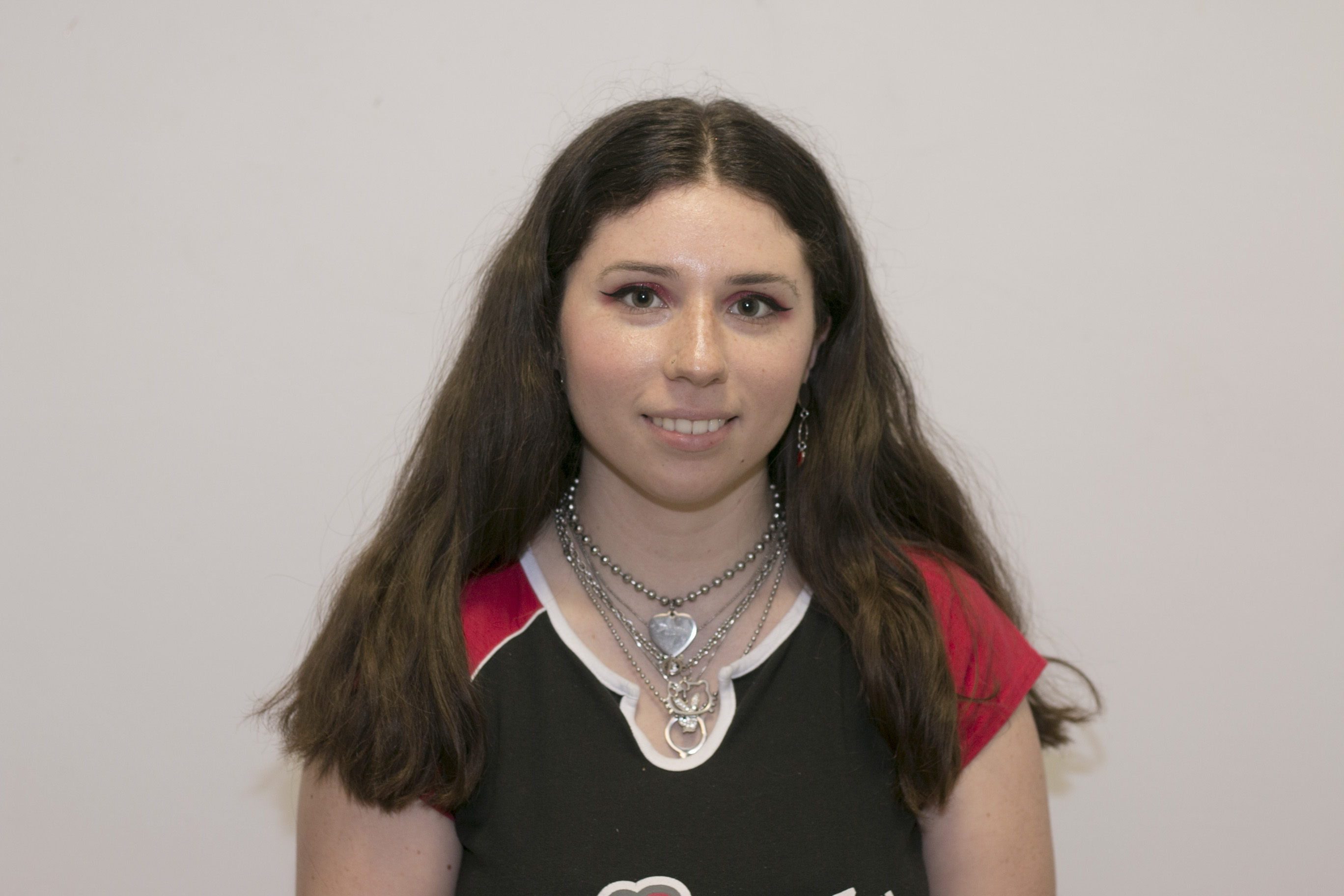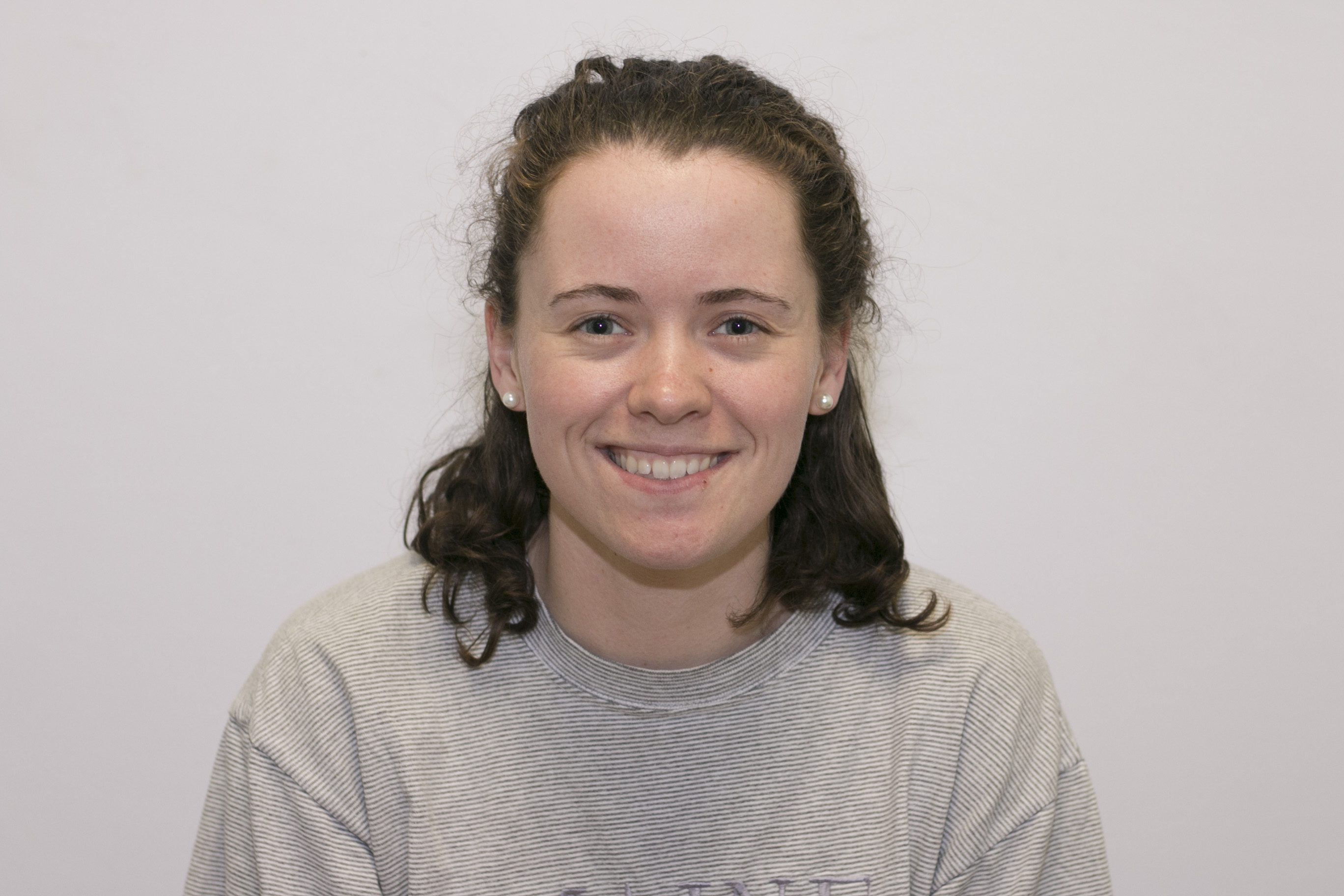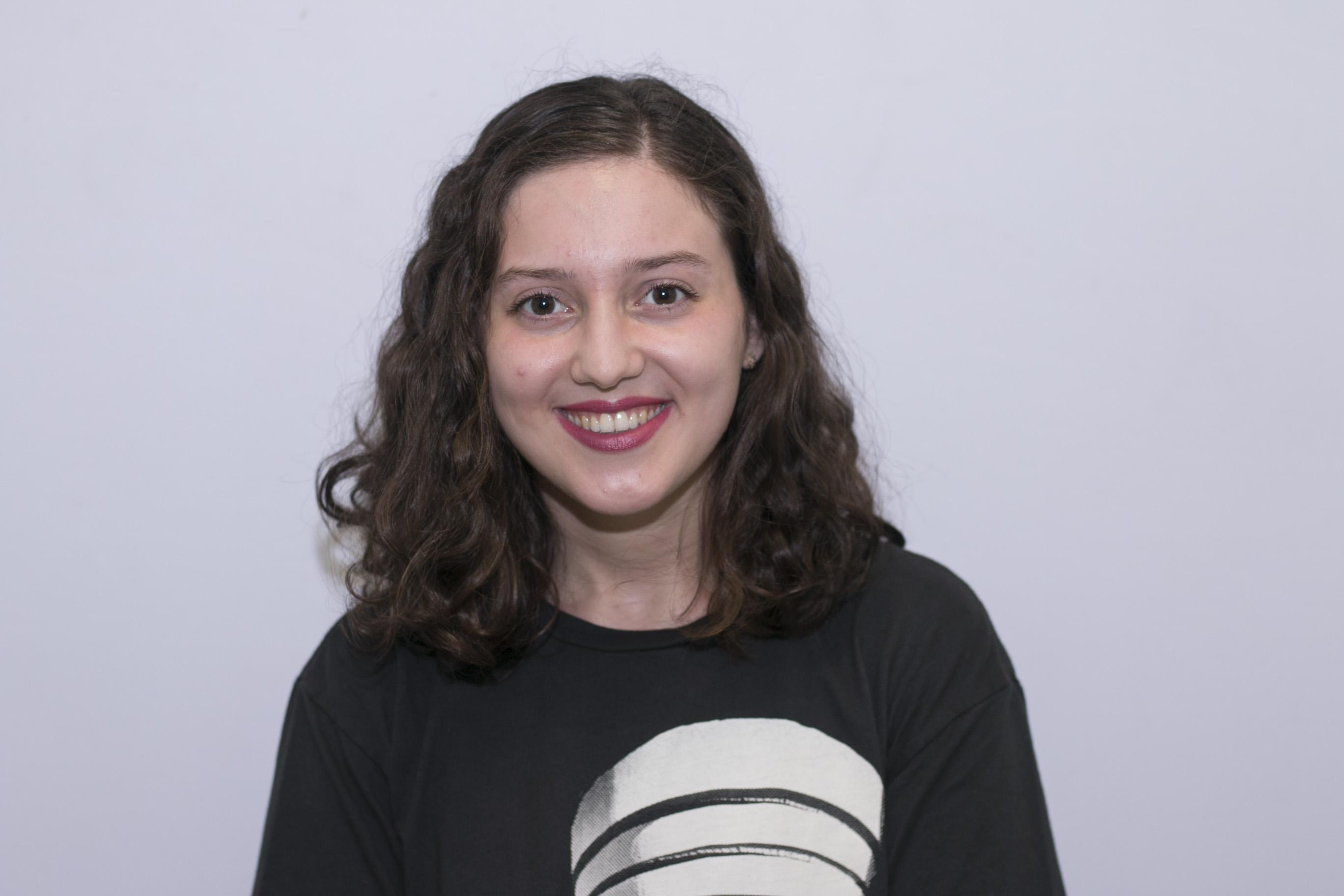
Taylor Mileski
Senior double-majoring in graphic design and sociology, intern at Nickelodeon in the social media department.
Pipe Dream: What compelled you to apply and work at Nickelodeon?
Taylor Mileski: I applied to, like, 50 internships, and that was the only one I heard back from, which is ironic considering I actually got it because I feel like you always pursue opportunities and they never actually come through, so that was nice. It was a brand growing up that meant so much to me: They had the weirdest things that you would never find on Disney or Cartoon Network. ‘iCarly,’ like, where would you see someone drawing on their feet and having their own internet show and putting it up to this kid who has a 40-pound video camera? And ‘Drake and Josh’ was also something I really enjoyed growing up. I think it was a really fun brand that aligned with my personality that I had a passion for, so I thought it would be a good place to start.
PD: Those shows aren’t running anymore, are they?
TM: No, so there are a lot of new, different shows, but they still pursue keeping the nostalgia alive around those older brands. Like, there’s NickSplat, which has all the ‘90s content.
PD: Did you feel that everyone else who was working there had also grown up with the brand?
TM: Yeah, one of the things we did was bring back ‘Double Dare’ this summer, which is a little bit older than me and a ‘90s show — they had all grown up watching that and they loved it so much and were so passionate about that project, because it meant so much to them bringing it to a new generation where parents and kids can share that.
PD: As the social media intern, was that something you had a lot of experience with already or was that more of a learning curve for you?
TM: I had both personal and professional experience with that. I had a One Direction Twitter with 20,000 followers in high school. I obviously told them that [when I was interviewing] because I was going to be honest … I also did social media for WHRW before I was program director and general manager, so I had that experience.
PD: What kinds of projects were you working on while you were interning?
TM: One of the main ones was Kids’ Choice Sports, which happens every July. It’s like the sports version of Kids’ Choice Awards, where people pick their favorite athletes for all these wacky categories. And then the show itself was a bunch of different obstacle courses and a lot of slime moments, like you would think. It was actually really fun, because I got to go to … it’s called the Watch Room and I was in there with a bunch of people live-tweeting or making sure everything was working while the show airs live. I was there from 7 to 10 [p.m.] making sure the fans were engaged.
I would also work on new show premieres, so if ‘SpongeBob’ had a new episode, I would watch those and come up with game-ified content for Instagram and be tweeting for the upcoming premieres on the weekend.
PD: Were you working with Nickelodeon’s main accounts?
TM: It wasn’t just me — they have a community manager who replies and engages with the fans, and there are teams that make the graphics for the Instagram. There’s a publishing manager who makes sure that Facebook posts come out at a certain time, so it’s a big collaborative effort and not a certain person running any singular account.
PD: How many followers did their Instagram and Twitter have?
TM: We actually reached 3 million on Instagram while I was there, so they did a cool ASMR-type video with paint smearing writing the ‘3’ and the ‘M.’
PD: Was it daunting to work with so many people watching your content?
TM: Not really, since I was used to that because of my past experiences. But it was something new because I’d never done anything that catered to a kids’ audience before, and you need to be really mindful of that when you’re making content.
PD: Was there a big takeaway for you that might inform what you want to do after you graduate?
TM: It made me realize how much fun it could be doing social media as your job — if you love social media and just doing it for your own personal brand, you could actually translate that into a real-world skill and create that fan community that you were once a part of.
PD: Did you have a favorite moment with the content of Nickelodeon?
TM: I will say that every single floor in the entire Viacom building is different — especially on the Nickelodeon floors, they make it like a kids’ environment. There were whiteboard walls that you could draw on, toys everywhere … they had a SpongeBob statue made of Legos and the ‘iCarly’ robot on one of the floors, so it’s really just a fun place to be and to work, and it makes you happy to go to work. One time, we got slime shipped to the office for everyone to play with — that was fun.

Erin Livingston
Senior majoring in art history, intern at “Sesame Street” in the archives department.
PD: What compelled you to work at ‘Sesame Street’ as an archives intern, and how well did you feel your previous experiences as an art history major played into working there?
Erin Livingston: I had applied to a bunch of museum internships, not so much archives necessarily, but for me, art history is about this idea of visual literacy, being able to interpret images around us in any context. Whether that’s a brand, like Sesame Workshop, or when you’re in a museum and you’re looking at a work of art. So that was something that was really interesting to me, because I do want to go into a Ph.D. program for art history, being able to use that experience and use the things that we’ve studied outside of a closed-wall museum. I think [individuals] have a responsibility to use the images they have in an enriching way for their brand.
In terms of comfort, I felt really good about being in the archives there, I have had other museum experiences and definitely felt like they translated over. In a lot of cases, the main archivist there was asking for my direct opinion on things from experiences I’ve had.
PD: Did you feel like you had a voice as an intern within the company?
EL: I worked mainly with the archivist, so anytime we were in a meeting with upper management, he was definitely there for it. But I definitely felt that in my direct interactions with him, he was listening and I was heard — though it was intimidating to give feedback in a meeting that wasn’t just him. I was under the publishing department and felt pretty comfortable talking to them, because bringing museum experience is very new for them and they were eager to listen.
PD: Can you tell me about what kinds of materials you were working with in the archives?
EL: There wasn’t as much physical stuff in the archives. It’s broken down into two main types of things you can have: their photography collection, so working with old 35-millimeter color or black-and-white slides, as well as film negatives and prints — that’s probably most of it. But how it started was with over 8,000 works of original book art from their publications, anything related to ‘Sesame Street.’ In addition to that, they have a huge offsite storage facility, where a lot of their archival stuff is important documents for the company: original transcripts for different episodes, set information, diagrams, toys, any old products … they have a huge collection of that.
PD: Did you have a favorite item you came across?
EL: That’s hard to say, because their office is also decked out in product. I was right next to the product department, so there was a lot of cool stuff they had: skateboards hanging up on the wall … I tell people all the time that if they viewed my summer, my visual summer, there would not be 15 minutes where I’m not in view of a Muppet. Constantly Muppet content, nothing else.
PD: Since everyone grows up with ‘Sesame Street,’ was there a huge nostalgic element to working there?
EL: Everyone loves it. And also, everyone has kids, so everyone talks about their kids all the time watching ‘Sesame Street.’ That was one of the best parts of working there, that everyone was so passionate about this message that ‘Sesame Street’ helps children grow smarter, stronger and kinder — that’s the mission statement of Sesame Workshop — but I’d be with people at a publishing department meeting and they’d say their neighbors would be like, ‘Oh, you work for Sesame Workshop? I thought you just really liked it,’ because they’re 50 years old and wear all the merch.

Aliza Hornblass
Junior double-majoring in art history and English, intern at the Solomon R. Guggenheim Museum in the director’s office.
PD: What compelled you to work at the Guggenheim?
Aliza Hornblass: Well, I live about eight blocks away, so I could walk to work every day. I wanted to work at a museum — I worked at [The Metropolitan Museum of Art] the summer before last, so I wanted to keep that train rolling. I definitely want to do something in museum studies, so getting that kind of experience is ideal. And I wanted to push out of my comfort zone; I’m not a fan of modern and contemporary art. I think a lot of it is strange to say the least. I thought, ‘If I work in a place that works in it, then I’ll be able to see it better.’
PD: Having finished working at the Guggenheim now, have you had any shifts in how you think about modern art?
AH: No. There’s a subset of modern art that I do like, and I think that it’s grown. However, I still have the same reservations about it. A lot of modern and contemporary art deals with appropriation from indigenous groups — African, Native American, Aboriginals in Australia — you have to be aware of that, and I see it wherever I look. I think the entire timeline of art history needs to be looked back on with a critical eye from everyone in the industry, and that’s not advantageous because of the art market right now.
PD: How did your feelings for this area of the art world factor into your work at the Guggenheim?
AH: Thankfully, for everyone involved, I wasn’t really involved with the art. I was the assistant to the director of the museum’s assistant so I was helping with administrative tasks — I wrote a lot of rejection emails for swanky dinners that Director [Richard] Armstrong was invited to, and was thinking it would be nice [if I] could go instead of him. Actually, my biggest project involved archiving the papers of the former deputy director [of the museum]. His papers have been packed up, but needed to be archived per the regulations of the museum. I went through everything, deciding what to keep and what to throw out. Those papers are going to be accessioned into the Guggenheim’s library, and that was all me.
PD: What professional skills or interpersonal skills did you leave with after this project?
AH: I did learn a lot about archiving personal papers, and I do anticipate having a project of that scope in the future. I learned a lot about professional writing — I wrote those rejection letters, and I wrote exactly three acceptances, which were very rare and very exciting.
PD: You have two years left of school — do you think you’re going to go back to museum work next summer? And do you feel that working at the Guggenheim will inform your upcoming academic projects?
AH: Absolutely — I do intend on pursuing another museum internship this summer. I did get a very good window to museum administration. I’m in this class called ‘Acquiring Art for the Museum,’ for which we acquire art for the University Art Museum, where we learn how to research for that and how an acquisitions committee works. I very much anticipate bring my experiences [from this summer] to school with me.


